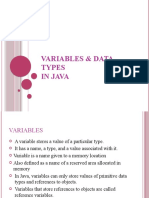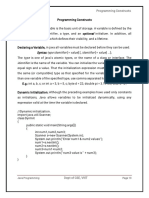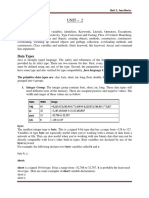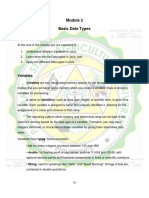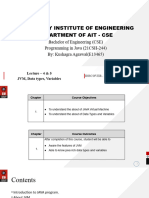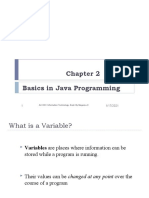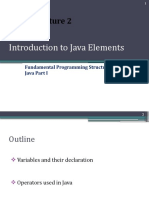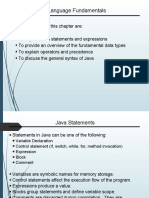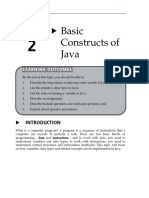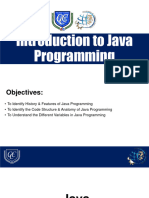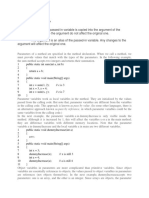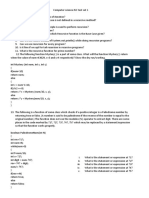0% found this document useful (0 votes)
7 views21 pagesL02 - Variables and Data Types
This lecture covers the basics of variables and primitive data types in Java, including how to declare and assign variables, the different types of variables (integer, floating-point, boolean, character, and string), and rules for naming them. It emphasizes the importance of variable types in determining what values can be stored and provides examples of valid and invalid variable names. Additionally, it introduces the concept of statements in programming and outlines reserved words in Java.
Uploaded by
lokeshbhs11Copyright
© © All Rights Reserved
We take content rights seriously. If you suspect this is your content, claim it here.
Available Formats
Download as PPT, PDF, TXT or read online on Scribd
0% found this document useful (0 votes)
7 views21 pagesL02 - Variables and Data Types
This lecture covers the basics of variables and primitive data types in Java, including how to declare and assign variables, the different types of variables (integer, floating-point, boolean, character, and string), and rules for naming them. It emphasizes the importance of variable types in determining what values can be stored and provides examples of valid and invalid variable names. Additionally, it introduces the concept of statements in programming and outlines reserved words in Java.
Uploaded by
lokeshbhs11Copyright
© © All Rights Reserved
We take content rights seriously. If you suspect this is your content, claim it here.
Available Formats
Download as PPT, PDF, TXT or read online on Scribd
/ 21






